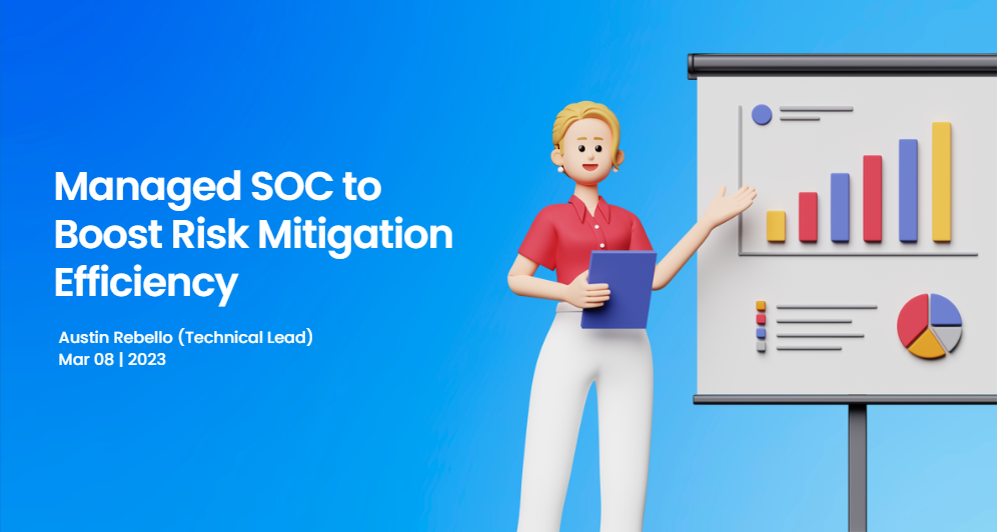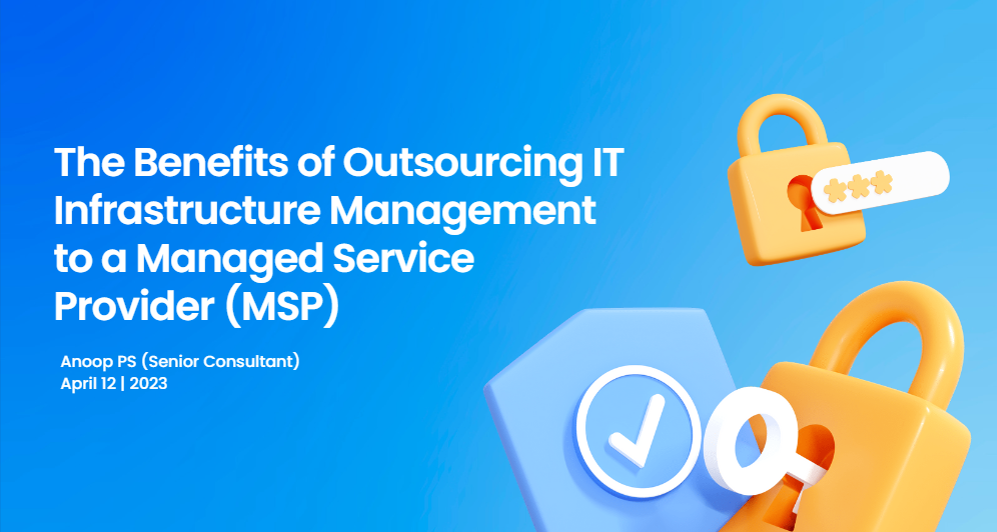sales@soffit.in | support@soffit.in | helpdesk@soffit.in
+91 1800 103 8 912 | +91 94 950 93 000

Top Stories

The modern marketplace is a vibrant and intricate ecosystem, where businesses thrive by forging partnerships with external entities like suppliers, vendors, and service providers. These collaborations offer countless benefits, but they also usher in a hidden element of risk that can disrupt operations, jeopardize data security, and tarnish a company's reputation. It is in this complex landscape that the concept of Third-Party Risk Assessment (TPRA) emerges as a vital lifeline for businesses aiming to navigate these turbulent waters successfully.
In this blog, we'll embark on a journey into the realm of TPRA, shedding light on its significance in today's business landscape. We'll explore the various types of third parties that fall under its purview, and we'll emphasize why conducting TPRA is a mission-critical practice. Moreover, we'll delve into the strategies required for executing an effective TPRA, ensuring that your business remains resilient, safeguarded, and primed for sustainable growth in an increasingly interconnected world.
What is third-party risk assessment?
Third-party risk assessment, in essence, involves scrutinizing the dependability and credibility of external entities or individuals with whom your organization collaborates or upon whom it relies for a spectrum of services, products, or assistance. This rigorous evaluation process is designed to ensure that these external partners do not pose any threats or vulnerabilities that could potentially disrupt your business operations, lead to data breaches, or result in legal complications. It is a fundamental practice in safeguarding your business and upholding its reputation. The integration of third-party risk assessment into your business protocols transcends being merely optional; it stands as an imperative necessity.
Types of Third parties considered in third-party risk assessment
In the realm of third-party risk assessment (TPRA), various external entities and organizations come under scrutiny due to their potential impact on a company's operations, data security, regulatory adherence, and overall business continuity.
Key types of third parties subject to TPRA include:
- Vendors and Suppliers: Critical providers of goods and services, encompassing technology vendors, raw material suppliers, and software providers.
- Service Providers: Specialized service-rendering entities, such as IT service providers, legal firms, marketing agencies, and consulting companies.
- Contractors and Subcontractors: Entities contracted for specific projects or tasks, spanning construction contractors and freelance professionals.
- Outsourced Processors: Third-party processors managing sensitive data, including payroll processors, cloud service providers, and data centers.
- Business Partners and Alliances: Collaborative entities engaged in joint ventures and partnerships.
- Financial Institutions: Banks, lenders, and financial service providers involved in financial transactions and lending.
- Regulatory and Compliance Authorities: Oversight bodies responsible for compliance and regulatory adherence, including government agencies and certification bodies.
- Customers: While primary stakeholders, customer actions and behaviors may influence the business and warrant consideration.
- Investors and Shareholders: Entities or individuals with ownership interests or investments in the company.
- Data Processors and Handlers: Organizations managing sensitive customer data, such as payment processors and customer support outsourcing firms.
- Supply Chain Partners: Entities within the supply chain, encompassing logistics providers, distributors, and manufacturers.
- Business Associations: Industry associations and trade groups that may impact industry standards and practices.
- Software Developers and SaaS Providers: Providers of software applications, including Software-as-a-Service (SaaS) vendors.
- Government Agencies: Government entities involved in permits, licenses, and regulatory compliance.
- Contracted Labor and Temporary Staffing: Agencies supplying temporary staff or contract workers.
- Affiliates and Parent Companies: Corporate family members, including subsidiary companies and affiliated entities.
What are the risks involved in third parties?
When your business engages with third-party vendors, it opens doors to a range of risks that can have far-reaching consequences. Gartner reports that enterprise risk management (ERM) teams are struggling to effectively mitigate third-party risk in an increasingly interconnected business environment.
Source: Gartner
Operational Risks
<p>Operational risks pose a multifaceted threat, impacting daily business operations, data security, customer satisfaction, and overall continuity. Entrusting third parties with sensitive data or system access can expose your organization to cyberattacks, potentially resulting in severe financial losses and damage to your reputation. Quality and performance issues have the potential to erode customer satisfaction and disrupt the business's ongoing operations. Furthermore, external factors such as geopolitical tensions and environmental incidents can also disrupt day-to-day operations.
Compliance and Regulatory Issues
Navigating the intricate web of compliance and regulations can be a complex endeavor, particularly for multinational corporations operating across borders. Variances in legal frameworks and cultural norms necessitate a comprehensive understanding of the regulatory landscape in each country of operation. Key regulations and standards include the General Data Protection Regulation (GDPR), Consumer Privacy Act (CPA), International Organization for Standardization (ISO), Health Insurance Portability and Accountability Act (HIPAA), Sarbanes-Oxley Act (SOX), Payment Card Industry Data Security Standard (PCI DSS), Intellectual Property Rights (IPR) Laws, Labor and Employment Laws, Geopolitical and Trade Regulations, and Contractual Obligations. Adherence to these policies and standards forms a robust framework for assessing and managing third-party risks. Failure by a third-party partner to meet these requirements can result in significant legal and financial repercussions for your organization. Ensuring third-party vendors' compliance with relevant regulations isn't just a best practice; it's often a legal obligation.
Reputation damage due to financial risks
The financial stability or bankruptcy of third-party partners can have repercussions that extend beyond supply chain disruptions and service interruptions. It can inflict substantial damage on your business's reputation, one of its most valuable assets. When a company you're affiliated with faces financial troubles, stakeholders, investors, and the public may scrutinize your own financial stability and ethical practices, potentially tarnishing your reputation. Hence, exercising prudence in selecting third-party partners and vigilantly monitoring their financial health is imperative to prevent reputational harm.
Vendor Lock-In
Relying excessively on a sole third-party provider can lead to a situation where your organization becomes overly dependent, constraining your flexibility and bargaining leverage. This dependency can, in turn, result in inflated costs, making it difficult to switch to alternative solutions when necessary. To counter this risk, diversifying your portfolio of vendors is a strategic approach to maintain your adaptability.
Hidden Costs
On occasions, the genuine cost of third-party relationships may surpass initial estimates. This could stem from concealed fees, unanticipated integration complexities, or ongoing support expenses. Conducting a comprehensive evaluation of the financial dimensions of your partnerships is crucial to preempt any unwelcome financial surprises.
How third-party risk assessment is performed?
Third party risk assessment typically includes evaluating factors such as the potential risks, data security, financial stability, compliance with regulations, and their overall risk posture. Here's a simplified approach on how to conduct a third-party risk assessment:
Step 1: Initial assessment and categorization
Begin by creating a comprehensive list of all third-party entities with whom your organization engages. Categorize them based on their level of importance to your business. Consider which third parties have a more significant impact on your organization's success and security. For example, a vendor responsible for a critical component in your production process may have a more substantial impact than a service provider handling non-essential tasks.
While compiling this list, gather essential information about each third party. This information should encompass details regarding their financial stability, standing in the industry, historical performance, and the specific services or products they deliver to your organization. This initial assessment serves as the cornerstone for prioritizing and directing your risk assessment efforts toward the most crucial relationships.
Step 2: Establishing risk assessment criteria
The effectiveness of your Third-Party Risk Assessment (TPRA) hinges on the establishment of well-defined risk assessment criteria. This crucial step involves the creation of a set of specific criteria tailored to align with your organization's distinct needs and industry standards. These criteria will serve as the metrics against which each third party will be measured.
Common risk assessment criteria often encompass elements like compliance with industry regulations, data security practices, financial stability, geographic location, and industry experience. These criteria play a pivotal role in standardizing the assessment process, ensuring that you evaluate third parties against consistent benchmarks.
By setting clear and comprehensive criteria during this phase, you construct a structured framework for evaluating third-party risks and ascertaining their potential impact on your organization.
Step 3: Due Diligence and Assessment
With the established criteria as your guide, the next step is to undertake due diligence and assessments of each third party. This involves a thorough examination of their capabilities, security measures, and overall suitability as a partner or vendor. Due diligence encompasses a range of activities, including:
- Financial Review: Analyzing the financial statements and stability of the third party to gauge their financial health.
- Security Assessment: Scrutinizing the third party's security policies and practices, assessing their ability to protect your data and systems.
- On-Site Visits or Virtual Assessments: Conducting in-person visits or virtual assessments, depending on the nature of the relationship and associated risks.
Step 4: Ongoing Monitoring and Mitigation
To maintain a proactive stance in third-party risk management, implementing a robust system for ongoing monitoring post-onboarding is of paramount importance. Regularly assessing the performance and security practices of third parties is vital to ensure the sustained adherence to contractual obligations and industry standards.
For third parties entrusted with sensitive data or access to critical systems, conducting periodic security audits or assessments is a necessity. Collaborating with these third parties to develop and test incident response plans becomes instrumental in ensuring swift and effective responses to potential security breaches or data incidents.
In tandem with monitoring, it's essential to formulate risk mitigation strategies. For those critical third parties carrying higher-risk profiles, consider the implementation of contingency plans, redundancy measures, or the identification of alternative vendors. These strategies offer a safety net, effectively mitigating the impact of potential disruptions or breaches stemming from third-party relationships.
Step 5: Documentation, Communication, and Continuous Improvement
In the culminating phase of Third-Party Risk Assessment (TPRA), documentation takes center stage. It's imperative to maintain comprehensive records of all assessments, audits, and interactions with third parties. This documentation holds significant weight for compliance purposes and serves as an invaluable resource for ongoing risk management.
Cultivate an environment of open and transparent communication with third parties, discussing identified risks and necessary improvements openly. Effective communication is the linchpin for collaboratively resolving issues and sustaining a healthy, productive partnership.
Periodically revisit and refresh your TPRA process. The risk landscape and the dynamics of third-party relationships are subject to change. Maintain agility by adjusting your risk assessment process to accommodate evolving circumstances, regulatory revisions, and emerging threats. Finally, institute a structured process for reporting significant risks to senior management or the board of directors. This ensures that decision-makers remain well-informed about third-party relationships and associated risks, equipping them to make informed decisions aligned with the organization's risk tolerance and strategic objectives.
Conclusion
Third-Party Risk Assessment is a pivotal foundation for shielding your business from unforeseen vulnerabilities and potential threats. At its core, TPRA is the methodical evaluation of the risks linked with third-party relationships. These risks encompass a wide spectrum, and neglecting TPRA can lead to legal entanglements, financial setbacks, and a tarnished corporate reputation that may take years to restore. TPRA transcends being a mere regulatory obligation; it is a strategic imperative. It represents an investment in the enduring strength and adaptability of your business. By embracing TPRA, you not only shield your organization from potential harm but also underscore your commitment to trust, integrity, and responsible business practices. In an age where trust holds immeasurable value, TPRA can set you apart as a dependable and trustworthy partner in the eyes of your stakeholders. Therefore, take the proactive step, assess your third-party risks, and fortify your business against the unpredictable challenges of the modern business landscape.

Soffit Infrastructure Services Pvt Ltd
Novel MSR Building,
Marathahalli, Bengaluru,
Karnataka 560037
administrative office
Soffit Infrastructure Services (P) Ltd
34/1441, Punnakkal, Elamakkara PO
Kochi 682026, Kerala, India
support
support [at] soffit [dot] in
helpdesk [at] soffit [dot] in
+91 1800 103 8 912
administration
info [at] soffit [dot] in
careers [at] soffit [dot] in
+91 8138 9042 30


Terms of use | Privacy Policy | Contact us
© 2025 Soffit Infrastructure Services Pvt Ltd. All Rights Reserved
Designed & Developed by Websoul Techserve












